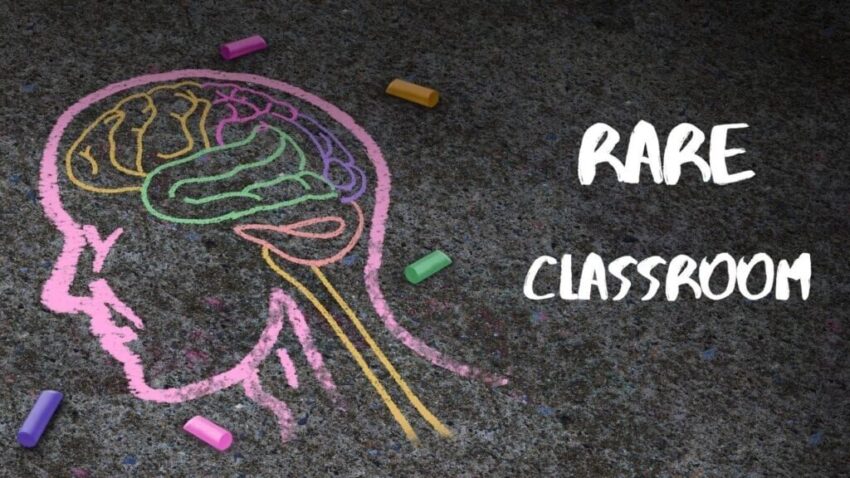Welcome to the Rare Classroom, a new series from Patient Worthy. Rare Classroom is designed for the curious reader who wants to get informed on some of the rarest, most mysterious diseases and conditions. There are thousands of rare diseases out there, but only a very small number of them have viable treatments and regularly make the news. This series is an opportunity to learn the basics about some of the diseases that almost no one hears much about or that we otherwise haven’t been able to report on very often.
Eyes front and ears open. Class is now in session.

The disease that we will be learning about today is:
Neurogenic Orthostatic Hypotension
Sometimes called positional or postural hypotension.
What is Neurogenic Orthostatic Hypotension?
- A sudden drop in blood pressure that occurs as a result of adopting a more upright position, usually standing up
- Defined as, “a persistent, consistent, orthostatic fall in systolic blood pressure of ≥20 mm Hg or diastolic pressure of ≥10 mm Hg within 3 minutes of erect standing”
- A subset or specific type of orthostatic hypotension that occurs when the autonomic nervous system fails to regulate blood pressure in response to changes in position
- Only occurs in people with an existing neurologic disease
- Abbreviated as nOH
- OH is most often seen in elderly populations
- The prevalence of OH in those aged 65+ is estimated to be between 5-30%
- The prevalence of neurogenic orthostatic hypotension varies depending on the disease state causing the disorder
- It is estimated that there are 80,000 – 150,000 nOH patients in the US
How Do You Get It?
- Neurogenic orthostatic hypotension is the result of other neurologic diseases that interfere with the function of the autonomic nervous system
- Examples include:
- Dopamine beta-hydroxylase deficiency
- Diabetic neuropathy
- Non-diabetic autonomic neuropathy
- Primary autonomic failure
- Parkinson’s disease
- Multiple system atrophy
- Pure autonomic failure
- Normal physiology is interrupted and orthostatic hypotension occurs when there is:
- Inadequate intravascular volume
- Autonomic nervous system dysfunction
- Decreased venous return
- Inability to increase cardiac output in response to postural changes
What Are The Symptoms?
- Symptoms generally occur soon after the patient changes from a seated position to a standing position
- Symptoms can be severe, especially at the start of each day and these symptoms are often associated with an increased risk for falls and injury.
- Symptoms often challenge caregivers and decrease quality of life for patients by:
- Causing disabling symptoms that make it harder to stand up and walk around
- Causing fear of falls and injury
- Reducing independence
- Known symptoms include:
- Lightheadednesss
- Dizziness
- Syncope (fainting)
- Recurrent falls
- Generalized weakness
- Fading vision
- Fatigue
- Nausea
- Headache/Neck ache
- Tremulousness
- Confusion
- Palpitations
- Symptoms are more likely to occur under certain factors and conditions such as:
- Hot weather
- After large meals
- After standing for a long time
- Early in the morning
How Is It Treated?
- Goals of treatment include:
- Improve orthostatic blood pressure without excessive supine hypertension
- Improve standing time
- Relieve orthostatic symptoms
- Improve patient’s ability to perform orthostatic activities of daily living
- Non-pharmacological interventions include:
- Patient education: Patients should be taught what events, actions, and conditions can exacerbate symptoms
- Lifestyle changes: This means avoiding known symptom triggers. Patients should avoid hot weather, move more slowly, avoid heavy lifting, eating smaller meals, and avoid too much activity in the morning
- Compression stockings: Prevents blood from pooling and thus provides a mechanical boost to make up for the lack of autonomic control
- Hydration: Drinking water increases blood volume. Drinking about 16 ounces of water can increase systolic blood pressure over 40mmHg
- Salt: Eating a high salt diet is recommended to raise blood pressure in those patients with nOH who do not have kidney disease
- Head elevation during sleep: Raising the head of the bed 10 to 30 degrees while sleeping can raise standing blood pressure
- Leg crossing: Leg crossing can decrease circulation to the legs which then helps maintain higher blood volume and blood pressure in your head
- Reducing medications: Certain medications can worsen nOH and may need to be reduced or discontinued
- Medications used for this illness include:
- Approved medications
- Midodrine HCL (ProAmatine)
- Elevates blood pressure by making arteries and veins more sensitive to adrenaline
- Droxidopa (Northera™)
- Works both in the brain and the body to increase standing blood pressure
- Midodrine HCL (ProAmatine)
- Off-label medications
- Fludrocortisone (Florinef)
- Increases blood volume and blood pressure by making the body retain sodium
- Pyridostigmine
- Stimulates the adrenal glands to release adrenalin during times of activity
- Atomoxetine (Strattera)
- Helps keep adrenalin in circulation
- Ergotamine
- Used alone or in combination with caffeine to increase blood pressure
- Recombinant erythropoietin
- Treats anemia to increase blood volume and pressure
- Desmopressin, or DDAVP
- Alternative to recombinant erythropoietin
- Octreotide (Sandostatin)
- Injectable that raises blood pressure
- Droxidopa (Northera)
- Fludrocortisone (Florinef)
- Approved medications
Where Can I Learn More???
- Check out our cornerstone on this disease here.
- Learn more about this disease from NOH Matters.


